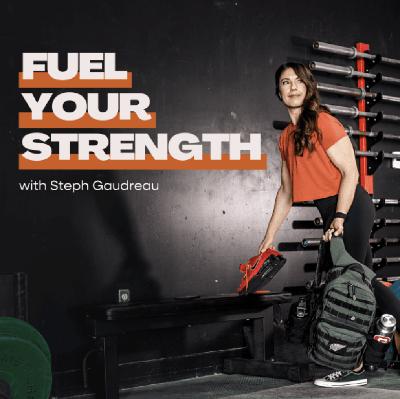Practical Cardio Training Tips w/ Jamie Scott Part 1
Description
Both strength training and cardiovascular fitness play an important role in your health and well-being. However, learning how to integrate both into your weekly training regime can be challenging. That's why I have brought my friend Jamie Scott on the show to give you some practical tips on implementing lower-intensity cardio into your routine.
Key Takeaways
If You Are Interested in Practical Tips for Zone 2 Training, You Should:
-
Focus on the training-to-train approach, which will allow you to learn about your needs
-
Find a balance between high-intensity and low-intensity training
-
Take your time and be patient knowing that you are providing your body with what it needs
Your Overall Fitness Plan with Jamie Scott
Jamie Scott is a New Zealand Registered Nutritionist. He holds postgraduate qualifications in Nutrition Medicine and Sport and Exercise Medicine, undergraduate degrees in Nutrition Science and Physical Education, and is a Level-1 Mountain Bike Skills coach (PMBIA). Over the past 25 years, Jamie's career has spanned several roles in the health and fitness industry. He is passionate about helping others learn how to fuel their bodies in a way that supports performance and total body health.
Polar Extremes
When you think about your training, do you ever think of it in terms of polarization? The truth is it takes many different types and intensities of training to achieve the results you are looking for. While it can be challenging to weave together all the training you should be doing, when you can distribute your training loads between the polar extremes, you can unlock different variations of metabolic reactions and build a more holistic training practice.
It's Not One or the Other, It's Both
Jamie is a big believer in training within the 'training to train' category. This means taking the time to learn the art and science of training as it applies to you and only you. Great things take time, and by focusing on learning more about your body and what it needs, you can perfect the overlap between high-intensity and low-intensity.
If you want to improve your endurance, strength, and ultimately the totality of your health picture, the key is learning how to balance the low intensity and high intensity. The benefits might surprise you.
What are you excited to hear about in Part 2? Share your thoughts with me in the comments on the episode page.
In This Episode
- Why 'Zone 2' is having a moment in the spotlight despite not being a new topic (12:50 )
- Learn what exactly 'Zone 2' training is and the alias terms it can also go by (19:57 )
- The importance of going through the training-to-train phase (35:03 )
- Specific and unique benefits of 'Zone 2' training and why, if you are endurance training, it is a necessary piece of the puzzle (39:47 )
- Breaking down the reasons as to why the overlap between high intensity and low intensity gets lost (45:56 )
Quotes
"There is a real art to it. And that art is kind of a bit fuzzy. We deal with broad ranges rather than absolutes." (28:57 )
"The trends that I am seeing… and some of the top minds in the field… have come out and said the feeling of a particular intensity is actually probably more important than the number." (30:40 )
"There is a learning phase you have to go through. There are phases of training, and for as long as I can remember now, I have tried to teach people that you have to go through the training to train phase." (35:25 )
"You are learning the art and science of training as it pertains to you, your body, your life, your context, your sport." (35:35 )
"It's not one or the other, it's both." (46:02 )
Featured on the Show
Apply for Strength Nutrition Unlocked Here
Follow Steph on Facebook | Twitter | Instagram | YouTube | Pinterest
I'd really love it if you would take 1 min and leave us a rating and review on iTunes!
Podcast production & marketing support by the team at Counterweight Creative
Rate and review on Apple Podcasts
Related Episodes
FYS 353: Fueling Best Practices with Jamie Scott
FYS 352: Energy Flux with Jamie Scott
FYS 417: Building Strength for Rowing with Shane Farmer







